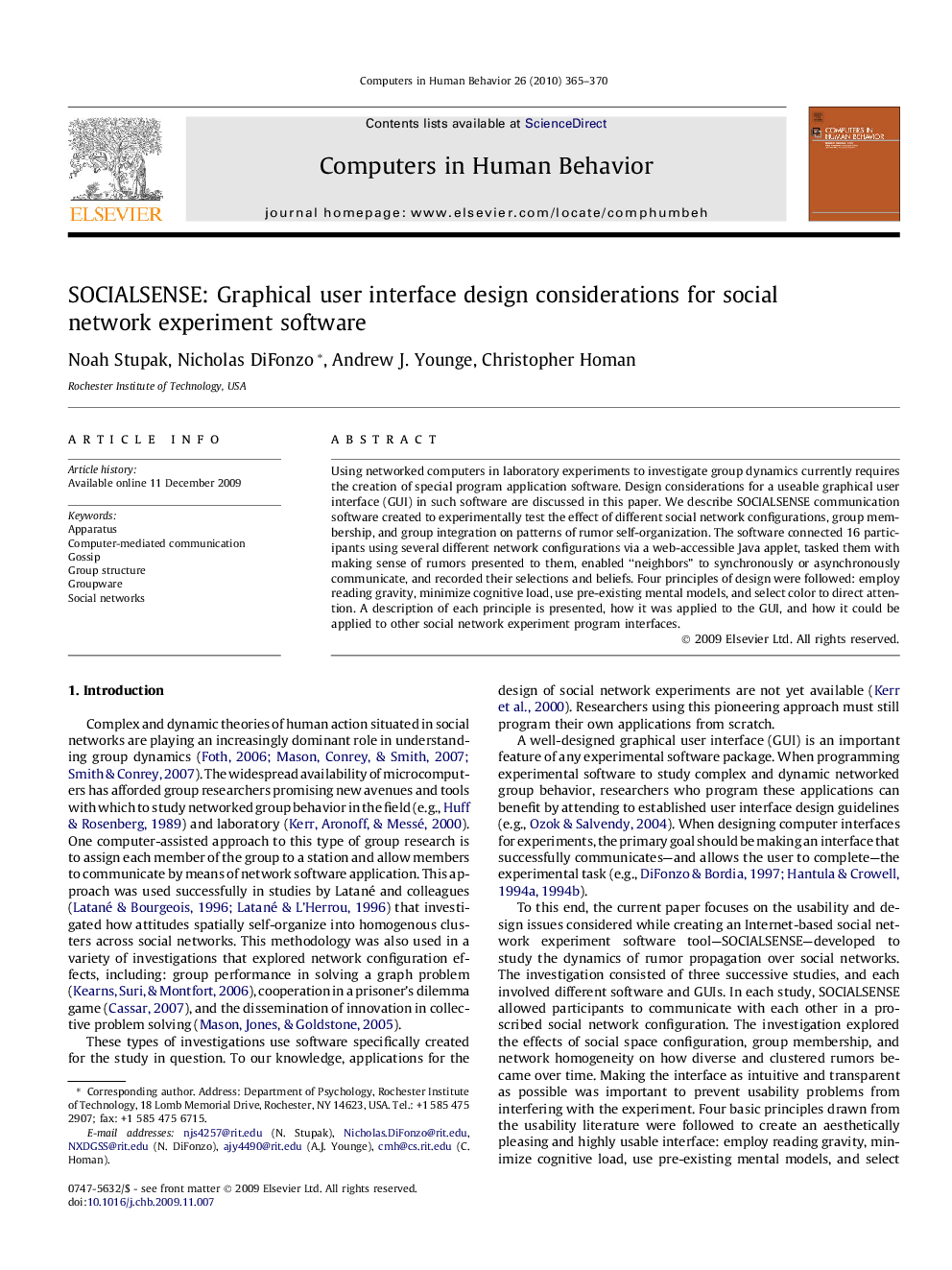| Article ID | Journal | Published Year | Pages | File Type |
|---|---|---|---|---|
| 352092 | Computers in Human Behavior | 2010 | 6 Pages |
Using networked computers in laboratory experiments to investigate group dynamics currently requires the creation of special program application software. Design considerations for a useable graphical user interface (GUI) in such software are discussed in this paper. We describe SOCIALSENSE communication software created to experimentally test the effect of different social network configurations, group membership, and group integration on patterns of rumor self-organization. The software connected 16 participants using several different network configurations via a web-accessible Java applet, tasked them with making sense of rumors presented to them, enabled “neighbors” to synchronously or asynchronously communicate, and recorded their selections and beliefs. Four principles of design were followed: employ reading gravity, minimize cognitive load, use pre-existing mental models, and select color to direct attention. A description of each principle is presented, how it was applied to the GUI, and how it could be applied to other social network experiment program interfaces.
